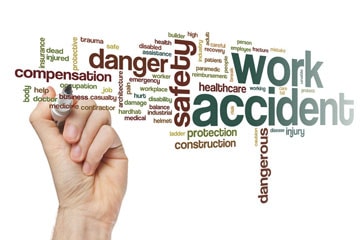The nature of the job has considerable impact on a worker’s chance of getting injured. Workers’ compensation insurance pays for the medical expenses and other damages for injured workers. Medical records review is an important requirement when evaluating workers’ comp claims and it provides a clear understanding of the injury and its impact. Recent statistics available from the U.S. Bureau of Labor Statistics (BLS) highlight the deadliest occupations in America.
According to the most recent data from the BLS, the year 2015 saw 4,836 fatal work injuries, not counting the active members of the U.S. armed forces. Most of these jobs were done by men, with ten industries witnessing the highest number of deaths per 100,000 full-time workers.
- Logging workers: Logging emerged as the most dangerous industry in the United States, with the fatal injury rate slightly more than 132 per 100,000 people.
- Fishers and fishing workers: The fatal injury rate in this category was about 55 per 100,000.
- Aircraft pilots and flight engineers: Their fatal injury rate was slightly more than 40 per 100,000.
- Roofers: This job category witnessed just below 40 fatal injuries per 100,000.
- Refuse and recyclable material collectors: Their fatal injury rate was around 39 per 100,000.
- Structural iron and steel workers: Roughly 30 fatal injuries per 100,000.
- Truck drivers: Approximately 24 per 100,000.
- Farmers, ranchers, and agricultural managers: The fatal injury rate in this category of work was around 22 per 100,000.
- Electrical power-line installer and repairer: For power-line workers, the fatal injury rate was approximately 21 per 100,000.
- Supervisors of landscaping, lawn service, and grounds-keeping workers: For them, the fatal injury rate was just over 18 per 100,000.
The 15th most dangerous job emerged to be that of police officers, up from its 17th position in 2013 though in 2014, the number of police deaths remained at 97 compared to the 130 fatalities in 2011.
While the BLS table ranks jobs by fatality rates, the total number of deaths for loggers is less than the number of fatalities for larger occupations such as truck drivers and farmers. Among the various occupations, the maximum number of fatalities occurred among driver/sales workers and truck drivers. This group suffered 885 fatalities in 2015. In 2015, there were 70 more transportation-related deaths than in 2014, and more fatal work injuries resulted from transportation-related incidents than from any other event in 2015.
In the broader category of industry, the construction sector experienced more fatal injuries than any other with 937, which is the highest total since 2008.
Considering work-related deaths on the basis of geography,
- Texas comes first with 527 fatalities
- 2nd place goes to California with 388 work-related deaths
- 3rd is Florida with 272
- In the 4th place is New York with 236 fatalities
- In the 5th position is Ohio with 202 fatalities
- Rhode island is the state with the least workplace deaths – 6
Here are some other statistics revealed by the BLS.
- By age, increasing death rates were noted among those over 25 years of age.
- Highest fatality rate was observed among workers age 65 and older, with 9.4 fatal injuries per 100,000 workers.
- 93% of the 4,836 people who died on-the-job were men.
- 903 Hispanic or Latino workers experienced fatal work injuries in 2015, up from 804 in 2014.
- The fatal injury rates exclude workers under the age of 16 years, volunteers and resident military.
The BLS ranking cannot be considered definitive because it included only jobs with at least 15 reported workplace fatalities in 2015, and 40 million or more work hours (20,000 fulltime employees). Some dangerous occupations may have been excluded. Some jobs that pose long-term health risks to workers such as those involving radiation exposure have not been obtained by the BLS.
Meanwhile, the U.S. Postal Service has emerged as a very dangerous sector to work in. According to OSHA (Occupational Safety and Health Administration), the U.S. Postal Service reports more severe injuries than any other employer. From the beginning of 2015 through the end of 2016, the U.S. Postal Service reported 395 severe injuries, the most of any employer. On its heels was Walmart, with 155 severe injuries and the United Parcel Service with 136.
- The U.S. Postal Service has a huge workforce and is one of America’s largest employers with around 640,000 employees, which partially explains the high numbers.
- Another possible reason for these high injury rates may be that the Postal Service has seen a large increase in new hires in recent years. In Fiscal Year 2015, they added more than 117,000 non-career employees or temporary workers who do not receive the same benefits/privileges as career employees. Moreover, the organization failed to meet the specific illness and injury frequency rates set by OSHA.
- Postal carriers spend a lot of time outside. They are exposed to the elements, with heat exhaustion and slipping on icy surfaces being some of the most common ways they injure themselves.
So why don’t you find the U.S. Postal Service listed among the most dangerous workplaces in the United States? It may be because fatality rates are still the only metric generally used to assess danger. This gives an incomplete picture of the risks of certain jobs. Employers are required to file an incident report if a severe injury occurs while a worker is on-the-job, but many employers do not do so. OSHA estimated in 2016 that more than half of severe injuries go unreported, and this results in underestimating the danger of certain workplaces.
Postal employees who suffer from on-the-job injuries are eligible for workers’ compensation. In FY 2015, the U.S. Postal Service estimated its liability for future workers’ comp costs at $18.8 billion, up from the $389 million in 2014.
Surveys and studies such as the above are real eye-openers, providing valuable information regarding the nature of various jobs and the risks involved. Best practices on the part of both employer and employees can ensure safer workplaces and minimal injuries and fatalities.




